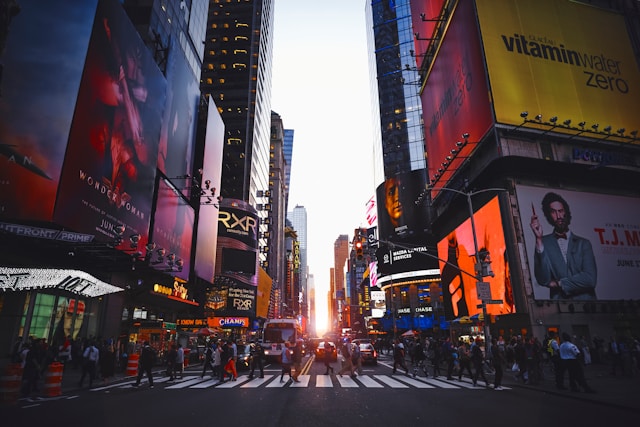For travelers and locals alike, knowing the rules of the road is essential to staying safe—and this applies to pedestrians just as much as to drivers. While walking may seem straightforward, pedestrian laws and customs vary significantly across countries, and understanding these differences can make a big impact on personal safety. Here’s a look at some of the most interesting pedestrian rules from around the globe and tips to navigate these differences with confidence.
Is Jaywalking a Crime or a Custom?
In the United States, jaywalking—crossing the street outside of designated crosswalks or against traffic lights—can result in a fine, especially in large cities like New York and Los Angeles. Jaywalking laws originated in the early 20th century as automobile use surged, with the term “jay” referring to inexperienced country folks who didn’t understand big-city rules. Today, enforcement varies widely across U.S. cities, with some viewing jaywalking as a serious offense and others barely acknowledging it.
In contrast, jaywalking is more of a cultural habit in countries like the United Kingdom and Australia, where pedestrians are often less restricted by formal crossing rules. In the UK, pedestrians generally adhere to crosswalks but aren’t typically penalized for crossing elsewhere. Some countries even lack jaywalking laws altogether, such as India, where pedestrians commonly cross streets wherever it is convenient, given the more informal nature of traffic flow.

Crosswalk Customs: Right of Way or Not?
The concept of right of way at crosswalks varies greatly. In Germany, for example, pedestrian crosswalks, known as “zebra crossings,” are strictly observed, and vehicles are legally required to stop for pedestrians. German drivers are known for their discipline, which makes crossing streets here relatively safe and predictable.
On the other hand, countries like Italy and Brazil have a more relaxed approach to crosswalks. While pedestrians technically have the right of way, drivers may not always stop, especially in bustling city areas. In these environments, pedestrians tend to rely on visual cues and direct eye contact with drivers to signal their intent to cross.
Looking Left or Right at Crosswalks
One of the most common mistakes travelers make is looking in the wrong direction when crossing the street. In countries that drive on the left, such as the United Kingdom, Japan, and Australia, pedestrians must remember to look right first. This can be confusing for those from right-side driving countries, where looking left is the instinctive first move. Major cities in these countries often have helpful reminders painted on crosswalks to “Look Right” or “Look Left,” guiding tourists and residents alike to safer practices.
Pedestrian-Only Zones and Car-Free Cities
In many parts of Europe, pedestrian-only zones are common, especially in historic city centers. Cities like Venice, Italy, are famously car-free, allowing pedestrians to navigate without concern for traffic. Other cities, like Copenhagen, Denmark, and Amsterdam, Netherlands, have extensive bike lanes and pedestrian zones that create a walking-friendly environment. These zones reduce traffic-related cross-walk accidents, allowing pedestrians to explore city centers more freely and safely.
In the U.S., pedestrian-only zones are less common but can be found in popular tourist areas like New York City’s Times Square or San Francisco’s Market Street. These spaces are typically created to improve pedestrian flow, but they also highlight the importance of dedicated walking areas in reducing accidents and enhancing the city experience.
To Wait or Not to Wait at Pedestrian Signals
Pedestrian traffic signals are a common sight in most major cities worldwide, but the interpretation of these signals can differ. In Germany, it’s customary to wait for the green pedestrian light, even if the street appears clear. The practice is not only a legal requirement but also a cultural norm; crossing on red can sometimes lead to fines or disapproving looks from locals.
In contrast, in cities like Bangkok, Thailand, and Cairo, Egypt, pedestrians may not wait for signals, especially if traffic is dense and fast-moving. Here, crossing often involves assessing gaps in traffic flow rather than strictly adhering to signal lights.
Unique Pedestrian Laws
Some countries have unusual pedestrian rules that catch travelers off guard. For instance, in Singapore, spitting on sidewalks is strictly forbidden, and littering carries heavy fines. In Japan, pedestrians walk on the left side of sidewalks in line with their left-side driving, creating a more orderly flow, especially in crowded areas.
In South Korea, some cities have introduced “smart crosswalks” with lights embedded in the ground to catch the attention of phone-using pedestrians, subtly promoting pedestrian safety through technology.
Tips for Navigating Pedestrian Rules as a Traveler
Staying safe as a pedestrian in a foreign country comes down to awareness and adaptability. Here are some key tips to keep in mind:
- Observe local behavior: One of the easiest ways to stay safe is to follow the lead of locals. Notice how they cross the street, whether they wait at signals, and if they make eye contact with drivers before stepping into the road.
- Stay alert: Avoid distractions like phones or headphones while walking, especially when navigating unfamiliar roads and traffic patterns.
- Look both ways: When in doubt, double-check both directions before crossing, especially in countries with traffic flow opposite to what you’re used to.
- Respect pedestrian zones: Take advantage of pedestrian-only areas and walkways when they’re available, as they’re designed with pedestrian safety in mind.
- Pay attention to signs and signals: In many tourist areas, pedestrian guidelines and warnings are clearly posted, making it easier to understand local rules.
Exploring a new city on foot can be one of the best ways to get to know its culture and layout. By understanding and respecting local pedestrian rules, travelers can enjoy the sights and stay safe, knowing they’re walking with confidence in unfamiliar territory. Whether it’s knowing when to jaywalk or which way to look, these small adjustments can make all the difference in experiencing a city like a local—safely and smartly.


